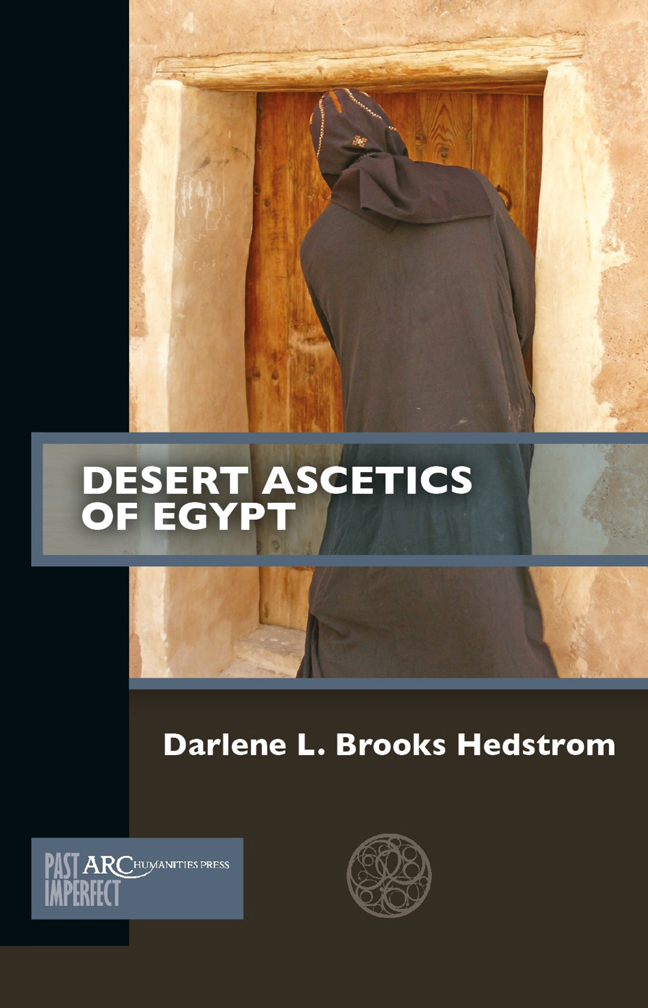Book contents
- Frontmatter
- Contents
- List of Illustrations
- Introduction: Travelling into the Desert
- Chapter 1 Desert Ascetics as Early Christian Celebrities
- Chapter 2 What Did the Desert Ascetics Teach and How Did They Live?
- Chapter 3 Who Was the First Desert Ascetic?
- Chapter 4 Monastic Literature, Letters, and Desert Ascetics
- Chapter 5 Archaeology of Early Egyptian Monasticism
- Chapter 6 Archaeology of Monastic Places
- Chapter 7 Monastic Archaeology and Monastic Things
- Conclusion: Reassembling a History of the Desert Ascetics of Egypt
- Further Reading
Chapter 4 - Monastic Literature, Letters, and Desert Ascetics
Published online by Cambridge University Press: 20 February 2024
- Frontmatter
- Contents
- List of Illustrations
- Introduction: Travelling into the Desert
- Chapter 1 Desert Ascetics as Early Christian Celebrities
- Chapter 2 What Did the Desert Ascetics Teach and How Did They Live?
- Chapter 3 Who Was the First Desert Ascetic?
- Chapter 4 Monastic Literature, Letters, and Desert Ascetics
- Chapter 5 Archaeology of Early Egyptian Monasticism
- Chapter 6 Archaeology of Monastic Places
- Chapter 7 Monastic Archaeology and Monastic Things
- Conclusion: Reassembling a History of the Desert Ascetics of Egypt
- Further Reading
Summary
In this chapter, we move out from the shadow of Antony and the Sayings to explore the monastic literature of Egypt during the late fourth and fifth centuries. If it is difficult to locate the historical Antony, uncovering a full history of monks whose lives were never recorded in the Sayings is even harder. This does not, however, prevent us from rereading our sources with a critical eye and incorporating documentary sources, which will shed new light on the activities and lives of male and female monks.
Antony was not the only monk attracted to caves, abandoned sites, and the margins of society. Other men and women shared Antony’s desire to live a new Christian life outside the social confines of marriage and family. Some of their stories appear in literature produced by other monks, such as Evagrius, John Cassian, Palladius, Jerome, and Rufinus. All these authors visited and lived at desert monastic sites in northern Egypt and wrote accounts of their experiences. Their works, along with the Life of Antony and the Sayings, create a rich body of literature with which to explore the evolution of the monastic movement.
An exciting development in the study of monasticism is the use of documentary sources from Egypt, such as letters, tax receipts, judicial accounts, and bequests written on papyri, potsherds, and stone flakes. These documents contextualize stories found in monastic literature as a reflection of daily life and interactions; it is material evidence that allows us to hear conversations, follow a journey of monks with goods from one place to another, and observe the division of property between family members. Documentary evidence also brings the lives of late-antique people into sharper focus. In addition to texts written on papyrus and ceramic sherds, documentary evidence may also include epigraphic evidence such as carved inscriptions on church lintels or stone funerary markers; painted inscriptions, known as dipinti, on walls of monastic houses; and graffiti inscribed on the surfaces of caves, churches, alleyways, and homes.
Letters, shopping lists, graffiti, delivery receipts, and personal archives all contribute to the foundation for building a more nuanced portrait of Christian Egypt and the monastic movement. While the biographies and travelogues of Christian monastic authors were intended to teach future monks how to live, they also served as testimonies to the miracles, instructions, and biographies associated with early monasticism.
- Type
- Chapter
- Information
- Desert Ascetics of Egypt , pp. 61 - 78Publisher: Amsterdam University PressPrint publication year: 2023



